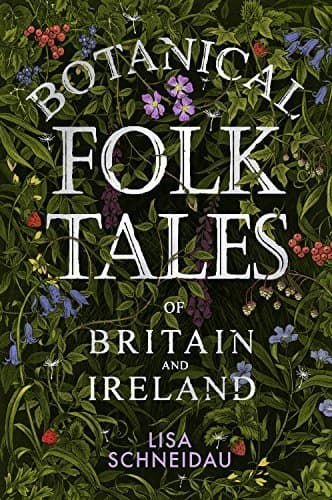
Book Review Summary: Botanical Folk Tales of Britain and Ireland
Introduction
Botanical Folk Tales of Britain and Ireland is a captivating collection of traditional stories that explore the rich plant folklore and wisdom of the islands. Author Lisa Schneidau has compiled a diverse range of tales from lowlands to uplands, fields, bogs, moors, woodlands, and towns. These stories delve into the complex relationship between people and plants, showcasing the importance of botany and the environment in our living heritage. Suitable for all ages, this book offers an essential reading experience for anyone interested in botany, nature, and the cultural significance of plants.
About Lisa Schneidau
Lisa Schneidau, the author of Botanical Folk Tales of Britain and Ireland, is a dedicated botanist with a passion for preserving the natural world. With years of experience in conservation and ecology, she brings her expertise to this collection of stories. Schneidau's love for plants shines through in her writing, making each tale engaging and informative. Her dedication to the environment is evident in her efforts to promote native wildflowers and their importance to ecology. This book is a testament to Schneidau's commitment to preserving the rich plant folklore and wisdom of Britain and Ireland.
Analysis of Views
- Escapism: Many readers found this book to be an absolute perfect choice for bedtime reading during a pandemic. The charming tales and plant-centric narratives provided a much-needed escape from harsh reality.
- Exceeded Expectations: Several readers were pleasantly surprised by the depth and breadth of knowledge presented in this collection. The stories ranged from well-known tales like Cinderella and Jack in the Beanstalk to obscure and unusual stories involving faeries and other-worldly beings. The short length of each story made it ideal for audiobook listening while driving or during leisurely moments.
- Cultural Significance: Readers appreciated how the author captured the essence of each story, linking it with the old ways of the land and the plants that played a key role during different seasons. This collection served as a reminder of the deep connection between humans and nature.
- Historical Context: The inclusion of historical context and plant lore before each tale was highly appreciated by readers. It provided valuable insights into the cultural significance of plants and their role in shaping our heritage.
- Variety: The book's variety of stories, from retold classics to modern twists, kept readers engaged and intrigued. The different endings and messages in each tale added depth and complexity to the overall narrative.
Reasons for Recommendation
- Charm: The author's charming writing style and the delightful stories made this book a must-read for many readers. It captured their imagination and transported them to a world where plants played a central role in storytelling.
- Educational Value: The inclusion of historical context and plant lore added educational value to each tale, making it an informative read for those interested in botany, ecology, or cultural heritage.
- Relatability: The stories resonated with readers who grew up listening to similar tales. The familiar elements in some stories, combined with new interpretations, provided a fresh perspective on well-known stories.
- Wheel of the Year Structure: The book's organization by growing season using the Wheel of the Year structure made it an engaging read, with each chapter offering a unique perspective on the changing seasons and their connection to nature.
Conclusion
Botanical Folk Tales of Britain and Ireland by Lisa Schneidau is a delightful collection of traditional stories that captures the essence of plant folklore and wisdom from the islands. Schneidau's expertise as a botanist adds depth to each tale, making it an educational and engaging read for all ages. From escapism to cultural significance, readers found this book to be a perfect antidote to harsh reality, providing an immersive journey through the natural world. With its charming narratives, educational value, and relatability, this book is highly recommended for anyone interested in botany, nature, or our living heritage.